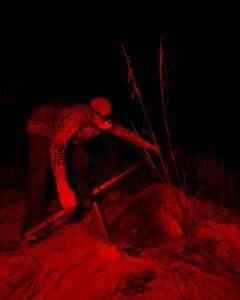Since the Conservancy of Southwest Florida began its Sea Turtle Monitoring Project 40 years ago, researchers have documented more than 8,200 nests, helping 380,000 hatchlings of primarily loggerhead sea turtles. This season, the team has documented record numbers: more than 552 nests on Keewaydin Island. The project has grown into one of the longest continuously running sea turtle monitoring programs of its kind in the U.S.
“We are seeing some of the original hatchlings coming back to nest,” said Kathy Worley, Conservancy’s Environmental Science Director. “In addition to monitoring nesting activity, preventing predation by resident wildlife and tagging the turtles to monitor nesting through the years, we conduct cooperative research with agencies and universities to gain insight into the life history of sea turtles to better protect them.”
The program was established to protect nests from predators like raccoons, ghost crabs, armadillos and opossums on the remote stretch of beach on Keewaydin Island. Only one in 1,000 sea turtles survives to adulthood, so each individual that can be protected is significant to the survival of this threatened species. While there are signs of recovery, six of the seven species of sea turtles worldwide are still considered threatened or endangered.
Some highlights in the program’s history include:
- The first leatherback nest on Keewaydin and the first recorded in Collier County in 2015.
- From 1994-2018, the Conservancy monitored the Naples City Beach in a partnership with Collier County and documented over 2000 nests, producing over 116,600 hatchlings.
- For the past 30 years, Conservancy biologists were visited periodically by one mother loggerhead, “Emily.” The team has spotted Emily 13 times since she was first flipper-tagged in 1988, with the latest in 2019.
Tissue samples are provided to universities for research, including the University of Georgia, University of Miami, Florida Atlantic University and the University of Florida. Some partnerships through the years include a sex ratio study with Rookery Bay National Estuarine Research reserve. A satellite tagging program with the University of Central Florida was expanded to include the Sanibel Captiva Conservation Foundation (SCCF) and green sea turtles on Sanibel Island.
In addition, the Conservancy’s sea turtle program has trained more than 130 interns, many who have gone on to continue working with sea turtles. Jill Schmid, who was an intern in 1997, became sea turtle field biologist and has been working with the Conservancy on the incubation temperature study to use the data to determine whether Keewaydin nests are producing male or female hatchlings.
Through the years, the sea turtle program has been supported by philanthropy, including the boats and ATVs needed for monitoring nests for seven miles on the Keewaydin beaches. The field station on Keewaydin that keeps equipment and provides shelter for the staff was rebuilt in 2017 and named the David S. Addison Sea Turtle Field Research Station. Without donor support, this important project cannot continue to thrive. Please visit conservancy.org/fundscience/ to support the Conservancy’s sea turtle program and continue to aid sea turtles like Emily.
About the Conservancy of Southwest Florida:
The Conservancy of Southwest Florida is a not-for-profit environmental protection organization with a 58-year history focused on issues impacting water, land, wildlife and the future of Collier, Lee, Charlotte, Hendry and Glades counties. The Conservancy accomplishes this mission through the combined efforts of its experts in the areas of environmental science, policy, education and wildlife rehabilitation. The Conservancy of Southwest Florida’s world-class Nature Center and von Arx Wildlife Hospital are headquartered in Naples, Florida, 1495 Smith Preserve Way, south of the Naples Zoo off Goodlette-Frank Road. Learn more about the Conservancy’s work and how to support the quality of life in Southwest Florida www.conservancy.org.





